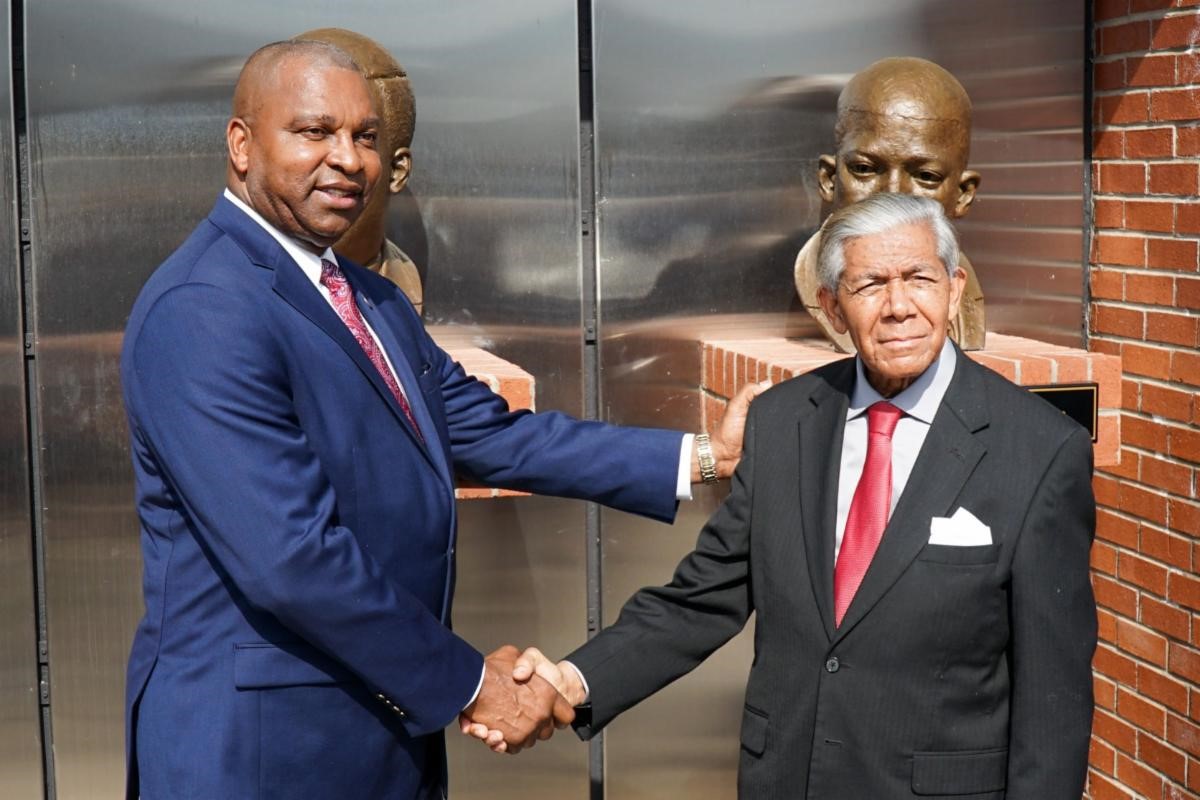Feb. 8 must be day ‘we will never forget’
By: JAMIA BELLAMY and LAZARUS MCCRAY
Feb 19, 2023

Cecil Williams, right, and SC State President Alexander Conyers at the Feb. 8 ceremony. (Photo special to The Panther)
On Feb. 8, 1968, three college students were killed and 28 other students were injured on the campus of South Carolina State University. They were shot by state troopers after a series of protests involving a segregated bowling alley.
On Feb. 8, 2023, South Carolina State University held the 55th observance of what is known today as the Orangeburg Massacre with the theme, “Black Resistance.”
SCSU’s Student Government Association President Zyah Cephus began the ceremony by proclaiming Feb. 8 as “a day we will never forget.”
SC State first lady Agatha Conyers then addressed the audience.
“We must continue to commemorate the lives that were lost and shattered that night,” Conyers said, encouraging the crowd to advocate for change by utilizing their voices as well as voting.
The speaker of the hour was Cecil Williams, the civil rights photographer who chronicled events in Orangeburg and elsewhere from before, during and after 1968.
“It was the Black resistance that was needed to break down the walls,” Williams said, referring to segregation.
Speaking further on Feb. 8 and to student reporters days before the service, Williams called himself storyteller. As photographer for both HBCUs in Orangeburg, Claflin and South Carolina State, he captured many things: sports teams, daily activities, and ultimately, Black student life and HBCU culture alike.
“It’s the most powerful and meaningful things in our lives (that) are captured -- birthdays, anniversaries. I am a storyteller,” he said.
Williams has been a key player in telling the story of the Orangeburg Massacre.
On the day of Feb 6, 1968, a big group of Black students stood outside of Orangeburg’s All Star Bowling Lanes wanting to go in, but they were denied entrance due to their skin color. At that time, the bowling lanes were still segregated, even though integration had become the law of the land.
There was a standoff between the students and officers and law enforcement, and when an accident occurred making a window at the bowling alley shatter, it sent a shock through the crowd, Williams said. Students ran and law enforcement chased them..
A female student tripped and fell while fleeing. Williams remembers her being an easy target to be clubbed by police. That sparked an uproar within the school’s community, and tensions rose. Students were ordered to remain on campus.
On Feb. 8, 1968, around nightfall, Williams left campus to eat and was not allowed to return. He was blocked by state troopers as well as SC State security.
Law enforcement blocked the Magnolia Street entrance of the school, standing intimidatingly with their guns and numbers, before a gathering of unarmed students.
That evening, a law officer was hit with a piece of wood thrown from the crowd of students. That would be the start of the Orangeburg Massacre.
Police struck back by firing shotguns. Three died. And Williams believes many more than 28 were injured as some did not seek medical care locally.
After what had taken place, law enforcement had no respect for what had been done, Williams said. No signs or tape were put up in the area of the shootings. Shotgun shells were left in the area, being found the next morning. Williams took photos of his peers holding spent shells.
“I remember every minute and moment of that day,” Williams said. “We capture much with our cameras … we capture a slice of life in our profession.
“We must never forget the sacrifice, the bloodshed and loss of life,” Williams said.